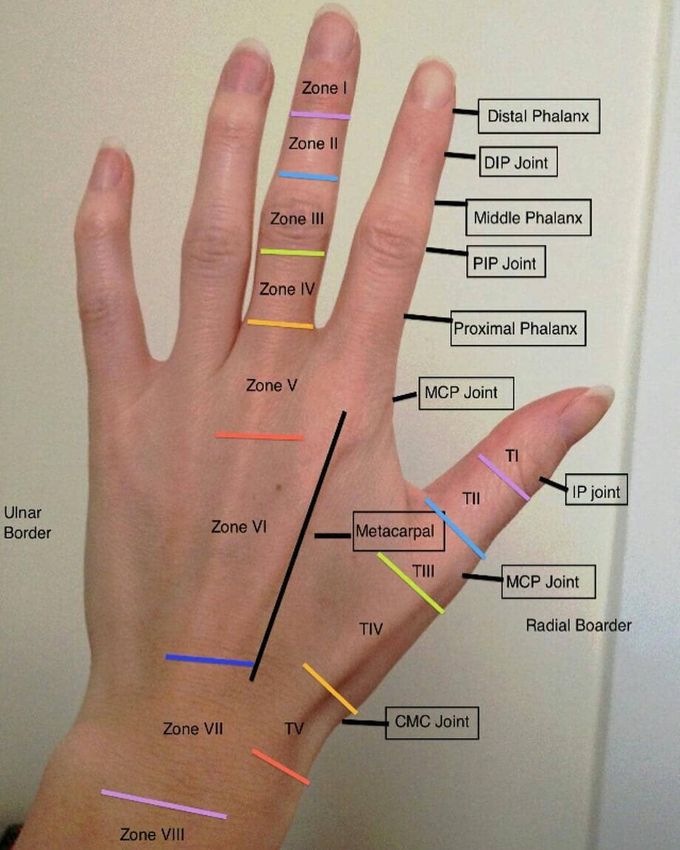


Topographical anatomy of hand
The extensor tendons of the hand are in a relatively superficial position; consequently, they are highly susceptible to injury from lacerations, bites, burns, or blunt trauma. Extensor tendon injuries are commonly diagnosed in the emergency department (ED). Certain injuries can be repaired in the ED, whereas others should be repaired by a hand surgeon at a later time in an operating room (OR). The dorsum of the hand, wrist, and forearm are divided into nine anatomic zones to facilitate classification and treatment of extensor tendon injuries. Odd numbers are used for regions overlying articular structures, with even numbers being assigned to the regions between joints, as follows (see the image below) : Zone 1 (distal interphalangeal [DIP] joint) Zone 2 (middle phalanx) Zone 3 (proximal interphalangeal [PIP] joint) Zone 4 (proximal phalanx) Zone 5 (metacarpophalangeal [MCP] joint) Zone 6 (dorsum of hand) Zone 7 (wrist) Zone 8 (distal forearm) Zone 9 (proximal forearm)
Source: https://www.instagram.com/p/BqU5hXmhqpb/?utm_source=ig_share_sheet&igshid=nluv0kxsh1wt
